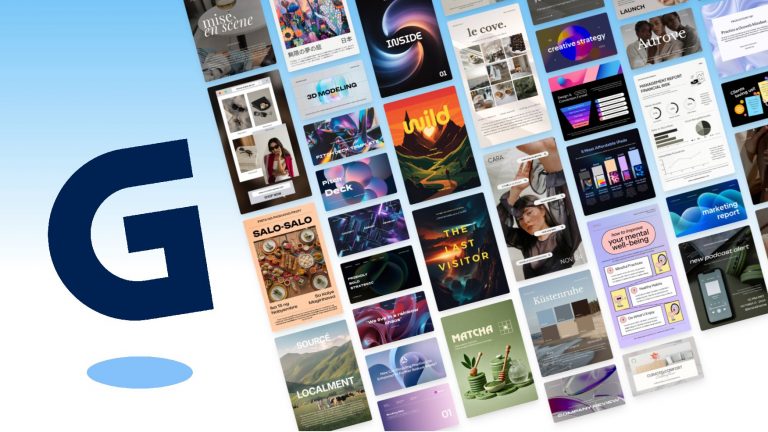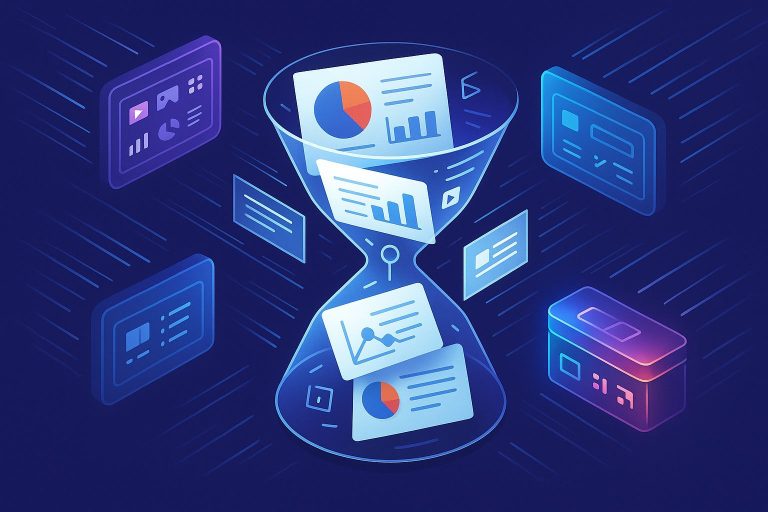Will AI Replace PowerPoint in 2025? It’s the Wrong Question.
Is AI replacing PowerPoint in 2025? This article argues that’s the wrong question. Explore how AI is fundamentally reshaping presentation creation and what it means for presenters.
What Got Me Thinking About This
I was on a client call last week, and someone shared a presentation made with Gamma. It was slick, modern, and clearly put together in a fraction of the time it would’ve taken with traditional software. Halfway through, my client said, “This is great, but can you export it to PowerPoint? Our leadership team needs to make edits.”
That moment crystallized the entire debate for me. The question isn’t whether a single tool will “kill” PowerPoint. The real, more interesting question is: How is AI fundamentally changing what we expect from presentations and the tools we use to build them?
What’s Actually Changing
The tension between legacy tools and AI-native platforms is the biggest story in presentations right now. On one side, you have the behemoth, PowerPoint, which is so ingrained in corporate workflows that it’s practically a utility. Microsoft is retrofitting it with AI features like Copilot, but its core remains manual and granular. On the other side, you have a wave of AI-first tools like Gamma, Beautiful.ai, and others that are built for speed and automation.
Here’s the shift I’m seeing in 2025:
- From Manual Design to Automated Generation: The primary value of tools like Gamma, Presentations.AI, and others is turning a prompt, document, or outline into a full first draft in minutes. This dramatically lowers the activation energy needed to start, which is a huge win for people who aren’t designers. Research shows professionals can spend 6-8 hours building a single 10-slide deck from scratch; AI cuts that down immensely.
- The Rise of “Good Enough” Design: AI tools have made it nearly impossible to create a truly ugly presentation. They enforce design principles, ensuring consistency in fonts, colors, and layouts. For many internal meetings or quick updates, this automated polish is more than sufficient.
- Integration vs. Disruption: A new category of AI tools, like Plus AI, isn’t trying to replace PowerPoint but augment it by living directly inside it as an add-on. This acknowledges that for many companies, the “.pptx” file format is non-negotiable. Other tools like Presentations.AI and Gamma are also emphasizing “high-fidelity” PowerPoint exports to bridge this gap, though users report mixed results with formatting.
What People Are Missing
The conversation is stuck on a simplistic “PowerPoint vs. AI” binary. This misses the real point: automation is not the same as persuasion.
Generating slides is easy. Crafting a compelling story is hard. This is where the current crop of AI tools still falls short. They are fantastic at creating structured, well-designed containers for information (market analysis, project updates, etc.). They are less adept at building a narrative with emotional weight, strategic pauses, and a clear, persuasive arc.
Most AI-generated decks I see feel generic. They have the right sections—problem, solution, market size—but they lack a soul. They present facts, but they don’t make an argument. This is the critical difference between a document and a presentation. A presentation needs to move people to action, not just inform them.
The other thing people are missing is that Microsoft isn’t standing still. While many early reviews of PowerPoint’s Copilot found it basic, it’s getting better. Its deep integration with the Microsoft 365 ecosystem is a massive, often underestimated, advantage. An AI that can pull data directly from Teams, Excel, and Word to build a presentation has a huge contextual edge.
What This Means for Presenters
So, what should a marketer, founder, or professional actually do?
- Use AI for Speed, Human for Story: Embrace AI tools to get from zero to a first draft instantly. Use them to brainstorm outlines, generate visuals, and handle the tedious formatting. But then, step in. Your job is to be the storyteller, the editor, and the strategist. Cut the generic filler, sharpen the key message, and arrange the slides to build a narrative.
- Choose the Right Tool for the Job: Not every presentation is a high-stakes keynote.
- For quick internal updates or brainstorms: An AI-native tool like Gamma or Beautiful.ai is perfect. Speed and clarity are key.
- For sales decks, investor pitches, or conference talks: Start with AI, but expect to spend significant time refining the story and visuals in a more powerful editor, whether that’s the AI tool itself or by exporting to PowerPoint or Google Slides.
- For enterprise-wide collaboration: You’ll likely be in the PowerPoint ecosystem. In this case, look at add-ins that bring AI capabilities into your existing workflow.
- Develop Your “Prompting” Skill: The quality of your AI-generated output depends almost entirely on the quality of your input. Learning to write detailed, structured prompts is the new essential skill for efficient presentation design.
What I’ll Be Watching Next
The “Will AI replace PowerPoint?” narrative will die out, replaced by a more nuanced reality. The future isn’t one tool winning; it’s a hybrid workflow where professionals use AI to handle the grunt work and their own creativity to build the story.
I’m keeping an eye on a few things: Will AI tools get better at narrative structure, not just slide generation? How quickly will Microsoft improve Copilot to make it a true competitor to the slicker, AI-native upstarts? And most importantly, will presenters learn to use these tools to augment their strategic thinking, or will we just end up with a flood of beautifully designed but ultimately boring and soulless presentations?
That’s the real question for 2025.







